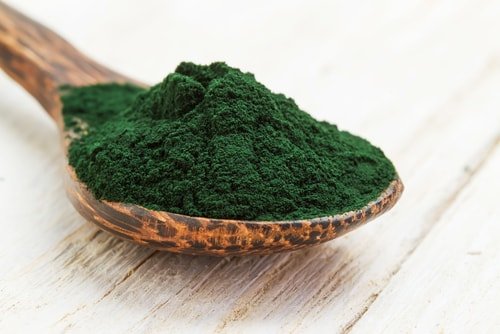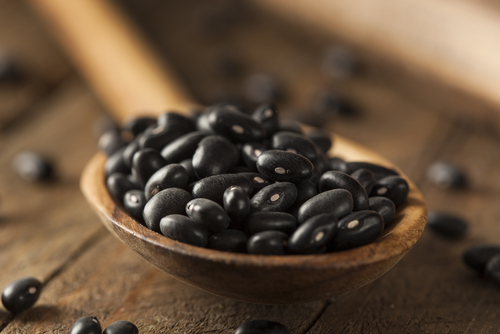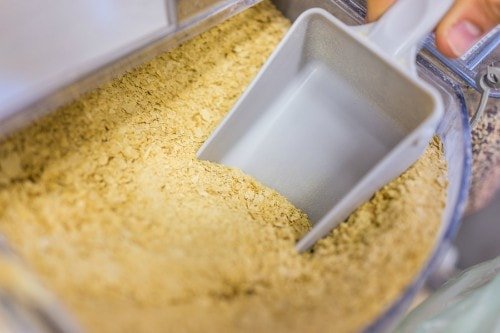14 Plant-Based Protein Sources for a Healthy Diet
Are you thinking about moving to a plant-based diet or eating less meat? The biggest issue most people face is finding good plant-based protein sources while still eating healthy.
Whether you’re trying to shrink your Sasquatch-sized carbon footprint down, or the thought of factory-farmed meat makes your skin crawl, you’re probably wondering how you’re going to get enough protein into your diet.
You might have heard somewhere that getting the proper amount of protein from plants is a complicated feat that’s almost impossible to accomplish, but that’s a myth that was proven false years ago.
The real deal is that unless you are on a fast weight loss plan or a competitive bodybuilder, you don’t NEED that much protein in your life.
It’s true that meat has all the essential amino acids in it that your body needs to be healthy, but you can just as easily get them from eating nutrient-rich whole foods.
We’re here to make that even easier for you. Here are 14 plant-based protein sources that are going to help you become your most awesome self!
This post may contain affiliate links, which helps keep this content free. Please read our disclosure for more info.
1. Natto
31 grams of protein per cup serving
Natto is quickly becoming one of those foods that everyone from Dr. Axe to Dr. Oz is talking about lately. It’s not new, though. It’s been a staple of Japanese diets for centuries.
It’s made from fermented soybeans that can seem a little, well, exotic to our western taste buds. People either love it or hate it, like marmite, Justin Bieber, or Nickelback.
Natto tastes okay to most people, but the texture is a little creepy, which is similar to a string bean dipped in snot…
If you can eat things like raw oysters without hurling (congratulations, you’re better than I am), then you’re probably not going to have a problem with it.
It also smells much worse than it tastes. Its odor could trigger your gag-reflex, making it difficult to muscle down.
I don’t think I’m selling this well as the #1 on our list of plant-based proteins you should try, but I figured it was also the most likely on this list to be the one that you hadn’t heard of before.
The reality is that it’s a highly nutritious superfood that’s a complete protein. While it is soy, the fermentation process makes it easy to digest.
2. Edamame
18 grams of protein per serving

If you’ve ever been to a sushi bar, you’ve probably downed bowlfuls of this yummy appetizer until you’re too full to eat the main course.
Edamame is a fancy name for boiled or steamed soybeans, and since soy is a complete protein, it’s loaded with amino acids.
Edamame has oodles of fiber – as much as four pieces of whole wheat bread – so it’s great if you’re dieting because it will help you feel full faster.
Soy is also notorious for being difficult to digest, though, and it’s also one of the most genetically modified crops in the United States. Make sure to get it organic and never eat it raw.
3. Tempeh
18 grams of protein per serving
Tempeh is the savior of many meat lovers-gone-vegan. It has a delicious nutty flavor and meat-like texture, so it makes you feel like you’re eating meat when you have an uber-craving for it.
It’s also made from soy which has been fermented, so it’s easier to digest than edamame or tofu.
If you’ve gone vegetarian or vegan and are craving things like kung pao chicken or chicken tacos, tempeh is going to bring joy back into your life.
4. Chickpeas
14 grams of protein per serving
Raise your hand if you love hummus (or have a tendency to eat half of the container in one sitting…)!
Chickpeas, aka garbanzo beans, happen to be the main ingredient in this delectable dip.
They are high in fiber and protein, like other legumes, are a great addition of protein to any diet, especially vegans and vegetarians.
Just make sure you don’t eat them raw because they’ve got toxins and anti-nutrients that are reduced when chickpeas are cooked or sprouted. They’ll make your belly feel like you ate a helium-filled balloon, which sounds like it could be fun, but it’s not.
5. Spirulina
16 grams of protein per ¼ cup serving

Spirulina sounds like it’s a type of pasta, but it’s bacteria called cyanobacterium that grows in water. It’s commonly called blue-green algae.
I know it sounds hurl-worthy, but it’s a pretty amazing food source.
Not only does it have high levels of protein in it, but it’s loaded with antioxidants, vitamins, and minerals. Gram per gram, it’s considered by many to be THE most nutrient-dense food on the planet.
It’s also a complete protein, which means it has all the essential amino acids in it that we need, while still being low calorie and low fat.
Don’t worry, you don’t need to gnaw on raw algae to get your daily protein intake. It comes in powder form, so you can mix it in with juice or a smoothie. It also goes great in recipes as well!
You can also try popping spirulina pills when you’re on the go and trying to stay away from unhealthy, quick food options.
6. Lentils
18 grams of protein per serving
Lentils are cheap, easy to cook, and incredibly versatile. You can make awesome veggie burgers with them that almost taste like meat!
If you are a dieter, then a serving of lentils is going to make you feel fuller for longer. One study showed that they keep participants hunger pangs at bay for two to four hours longer than the same portions of other foods.
Lentils are also great for reducing inflammation, which can be responsible for everything from intestinal gas to cancer.
I personally love lentils because they tend to be easier to digest than other legumes, meaning less gas and belly bloat afterward!
7. Tofu
15 grams of protein per serving
If you’re a vegetarian or vegan, then tofu is probably a faithful old friend. You can use it to make everything from vegan eggs to tofurkey (yes, that’s really a thing).
Sautéed, stir-fried, scrambled, or baked, tofu is as versatile a plant-based protein as you can get. It’s an easy food that can be used to mimic just about any meat or dairy dish you want.
Beware of tofu that isn’t organic because it’s made from soy. Avoid sketchy pesticides and GMOs by always buying organic tofu.
8. Black Beans
15 grams of protein per serving

If you’re on a shoestring budget, then black beans are another cheap and delicious way to get some protein in your body. They are also easy to make, in case you’re a bit of a lazy cook.
Like all legumes, they are loaded with fiber, antioxidants, and other nutrients. What makes them really sexy as a food source is that studies show that they can lead to significant reductions in body fat.
9. Pumpkin Seeds
10 grams of protein per quarter cup serving
Pumpkins aren’t just for carving or flavoring for yummy lattes. Their seeds are the only seed that is alkaline-forming, which helps you create pH balance in your body.
They taste amazing when they’re toasted, but make sure to soak them before eating. They are hard on the digestive system, especially if you have leaky gut or other intestinal issues.
Pumpkin seeds also contain L-tryptophan, which is the same amino acid that turkey has that makes you want to cat nap after holiday dinners. It tends to make you sleepy, so pumpkin seeds are a great snack to have before bedtime.
10. Amaranth
9 grams of protein per one cup serving
Since gluten-free started trending, and even become a necessity for the ever-increasing legions of gluten-sensitive people, amaranth has become a popular “ancient grain.”
It’s been cultivated in South America for 8000 years and it’s a great replacement for wheat.
The amaranth plant is a bit of a non-conformist, the Lady Gaga of plant-based protein sources, if you will. It’s considered a “pseudograin,” which means it’s not classified in either the grain or the seed family.
It’s a rebel grain/not grain, but don’t eat it simply because it will make you feel like you’re one of the cool people who doesn’t care if they’re popular.
Eat it because it’s packed with nutrients and antioxidants that are good for you.
11. Nutritional Yeast
9 grams of protein per serving

This plant-based protein source with the decidedly unappetizing name brings cheesy, dairy-free, delectable goodness into every vegan’s diet. Since its name is so unappealing, people have started calling it “nooch.”
I used to use it on my salads ALL the time when I was a vegan.
It’s THE dairy replacement for lactose intolerant cheese lovers.
Nutritional yeast is a complete protein and a godsend for those of us who crave Parmesan cheese on our gluten-free quinoa spaghetti. It tastes just like it!
You can also use it to thicken sauces, soups, or as a flavor enhancer. My favorite way of using it is to make vegan nacho cheese sauce.
12. Quinoa
8 grams of protein per one cup serving
Quinoa has become SO popular in the states that it’s likely even your grandma knows what it is (even if she hasn’t accepted it as a replacement for rice yet).
I could go on and on about quinoa. It’s my “go-to” plant-based protein source when I need an easy-to-prepare, delicious base for a meal.
The Inca used to cultivate it, called it the “Mother of all grains.”
Like amaranth, quinoa is considered an “ancient grain,” which is a seed that’s prepared and eaten like a grain. It’s also a complete protein and as easy to find near the rice on a supermarket shelf.
13. Chia Seeds
6 grams of protein per 2 tablespoons

In the 70’s, every kid wanted a novelty item called the “Chia Pet,” which was a terracotta figurine in the shape of a sheep that was used to grow chia plants.
“Chia” is the Mayan word for strength, and its seeds have been used as a superfood for thousands of years. They’re highly nutritious, full of fiber, and have a decent amount of protein in them.
You can also find chia seeds in the health food section of most larger supermarkets these days, and they go great in dessert recipes and smoothies!
14. Almonds
6 grams of protein per serving
Almonds are a tasty protein, but they’re highly valued by doctors because of their ability to lower cholesterol. They also have a high fiber content, which supports weight loss.
If you’ve heard that almonds have a high-fat content, don’t worry about it. They contain monounsaturated fatty acids, which are good fats.
Just make sure to eat no more than one serving size at a time. They are VERY easy to snack on and overeat!
Leave a comment below if you enjoyed this article on plant-based protein sources, or have any questions!

Great post. I really need to look into trying spirulina. Another great option that we started using are hemp seeds. They have 10g of protein for 3 tbsp. They make a great topping for yogurts and sometimes we include them in smoothies
HEY Lauren! Excellent Pst ..thank you for sharing it..